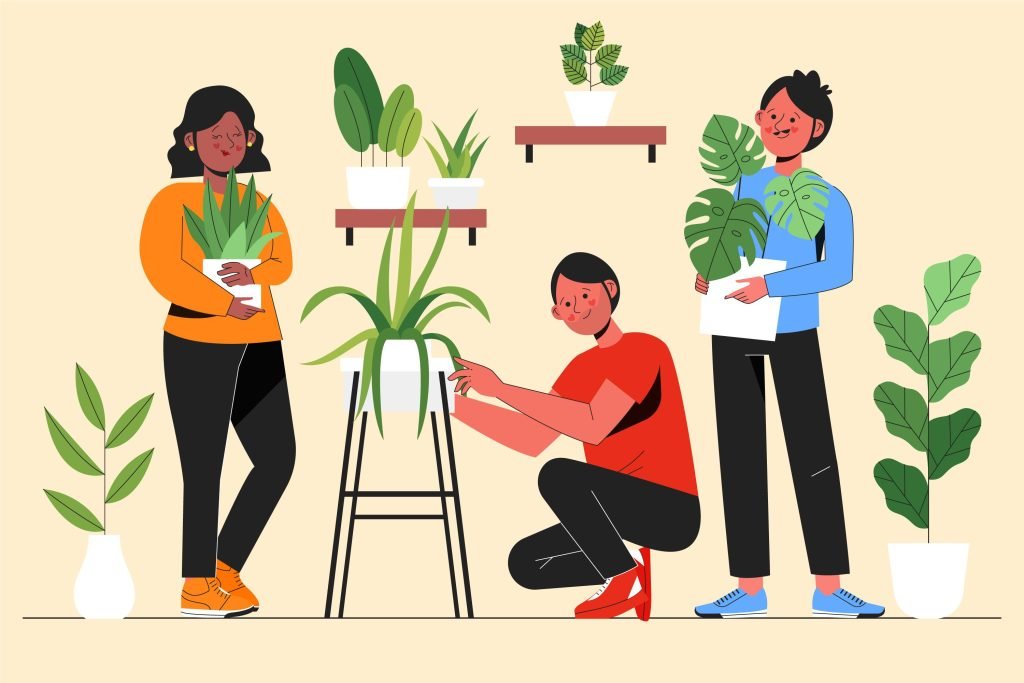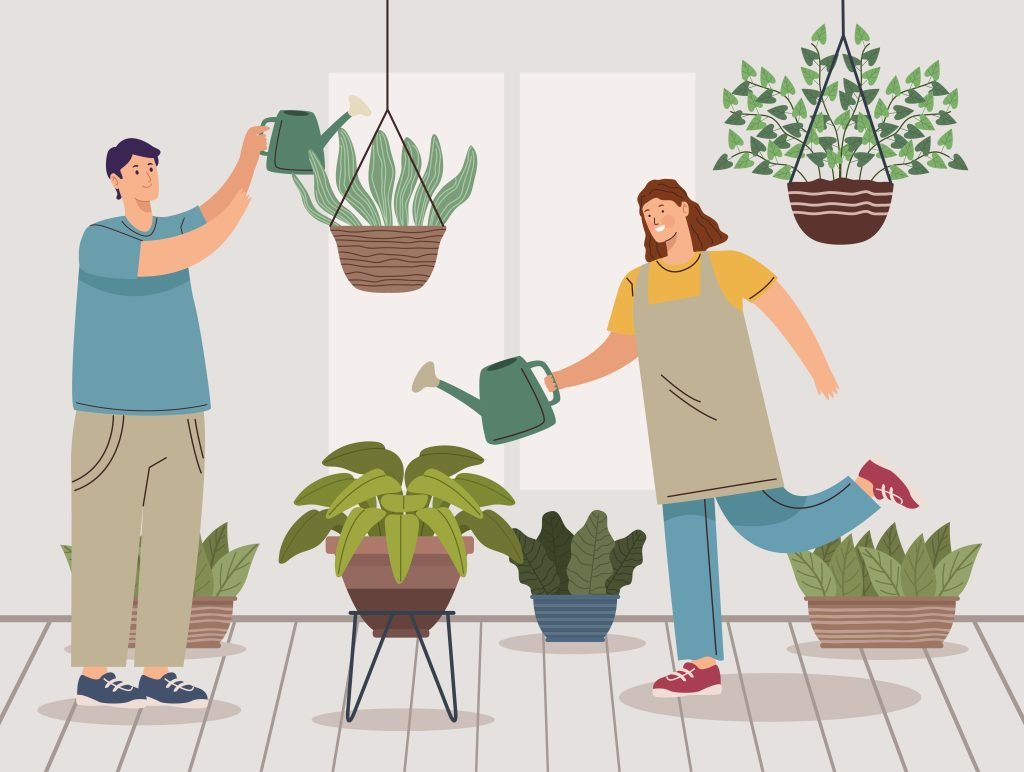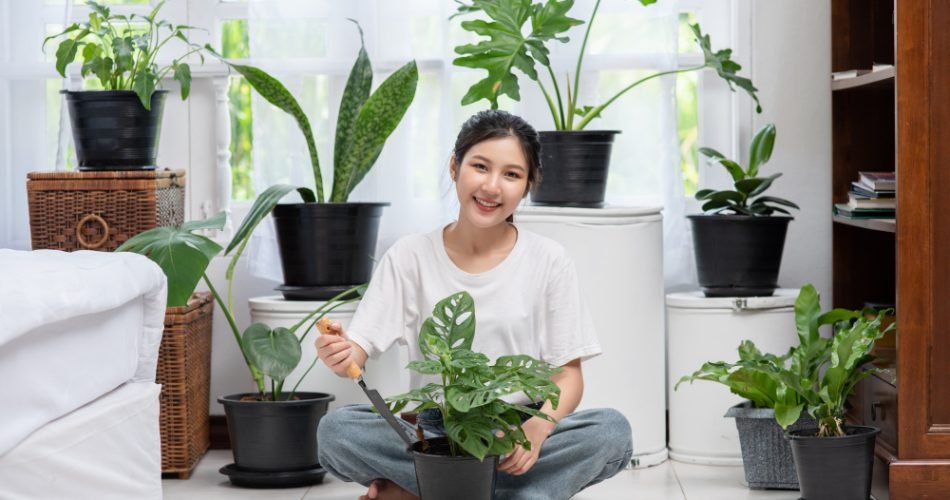Introduction
Houseplants are something beyond designs. They are residing organic entities that can further develop your indoor air quality, lessen pressure, and bring a dash of nature into your home. Be that as it may, if you need to partake in the advantages of houseplants, you really want to know how to appropriately focus on them. In this article, we’ll furnish you with all that you want to be aware to develop and really focus on houseplants effectively.

I. Picking the Right Plants for Your Home
A. Think about the Lighting in Your Home
B. Decide Your Ability Level
C. Pick Plants that Fit Your Space
D. Research Expected Issues with Explicit Plants
II. Setting up Your Home for Houseplants
A. Clean Your Home
B. Establish a Reasonable Climate
C. Pick the Right Soil
D. Utilize Appropriate Holders
III. Watering Your Houseplants
A. Comprehend Your Plant’s Water Needs
B. Utilize the Right Watering Strategies
C. Keep away from Normal Watering Errors
IV. Giving Sufficient Lighting
A. Realize Your Plant’s Lighting Needs
B. Place Your Plants Perfectly positioned
C. Think about Supplemental Lighting
V. Treating Your Houseplants
A. Figure out Your Plant’s Supplement Needs
B. Pick the Right Manure
C. Utilize the Right Preparing Methods
VI. Pruning and Engendering Your Houseplants
A. Know When to Prune
B. Utilize Appropriate Pruning Methods
C. Proliferate Your Houseplants
VII. Managing Nuisances and Sicknesses
A. Know the Indications of Nuisances and Sicknesses
B. Utilize Regular Cures
C. Utilize Synthetic Medicines If all else fails
VIII. Investigating Normal Houseplant Issues
A. Yellowing Leaves
B. Shriveling Leaves
C. Earthy colored Tips on Leaves
D. Leggy Plants

IX. Conclusion
I. Picking the Right Plants for Your Home Before you purchase a houseplant, you really want to consider a few elements to guarantee that it will flourish in your home. One of the main elements is lighting.
A. Consider the Lighting in Your Home Various plants have different lighting needs, so it’s critical to comprehend the lighting conditions in your home. A few plants require full sun, while others lean toward halfway or full shade. On the off chance that you have very little regular light in your home, you can consider buying a develop light.
B. Decide Your Ability Level One more significant component to consider is your expertise level. A few plants require more consideration than others. On the off chance that you’re new to houseplants, you might need to begin with low-support plants, for example, succulents or snake plants.
C. Pick Plants that Fit Your Space You ought to likewise consider how much space you have accessible. On the off chance that you have very little space, consider buying little plants or plants that can be swung from the roof or put on a windowsill.
D. Research Possible Issues with Explicit Plants Before you purchase a houseplant, it’s smart to investigate any potential issues that might emerge. A few plants might draw in bugs, while others might be harmful to pets or little kids.
II. Setting up Your Home for Houseplants Whenever you’ve picked your plants, it’s essential to set up your home to guarantee that they will flourish.
A. Clean Your Home Before you bring your plants home, you ought to clean your home to eliminate any residue or allergens that could hurt your plants.
B. Establish a Reasonable Climate Houseplants flourish in conditions with sufficient stickiness and temperatures somewhere in the range of 60 and 75 degrees Fahrenheit.
C. Pick the Right Soil Picking the right soil is fundamental for the wellbeing of your houseplants. Most houseplants favor well-depleting soil that permits water to effortlessly course through it. You can buy pre-blended soil at a nursery community or make your own by blending gardening soil, perlite, and sand.
D. Utilize Legitimate Compartments Picking the right holder is additionally significant. Ensure the holder has waste openings to keep water from pooling at the base, which can prompt root decay. The holder ought to likewise be sufficiently enormous to permit the roots to develop and give dependability to the plant.
III. Watering Your Houseplants Watering is one of the main parts of houseplant care, and it’s critical to comprehend your plant’s particular watering needs.
A. Comprehend Your Plant’s Water Needs Various plants have different water needs, so investigating the particular watering prerequisites for every one of your plants is significant. Overwatering is a typical issue with houseplants, so it’s essential to screen the dirt dampness level and possibly water when important.
B. Utilize the Right Watering Methods While watering your plants, make a point to water completely until water emerges from the waste openings. Try not to get water on the leaves, as this can cause water spots or parasitic infections. You can likewise fog the leaves with a splash container to increment mugginess.
C. Stay away from Normal Watering Slip-ups Overwatering is a typical error that can prompt root decay and different issues. Try to allow the dirt to dry out among watering and abstain from leaving water sitting in the saucer. Underwatering is likewise an issue, so try to routinely screen your plants.
IV. Giving Satisfactory Lighting is one more significant consider houseplant care, as plants need light for photosynthesis.
A. Realize Your Plant’s Lighting Needs Various plants have different lighting needs, so exploring the particular necessities for every one of your plants is significant. A few plants require full sun, while others incline toward incomplete or full shade.
B. Place Your Plants Perfectly positioned Spot your plants in a spot that gets the suitable measure of light for their particular requirements. South-bound windows regularly give the most light, while north-bound windows give the least. You can likewise pivot your plants at regular intervals to guarantee that all sides get equivalent light.
C. Think about Supplemental Lighting On the off chance that your home doesn’t get sufficient normal light, you can consider utilizing a develop light to enhance the light your plants get.
V. Preparing Your Houseplants Treating is vital to give your plants the supplements they need to develop and flourish.
A. Comprehend Your Plant’s Supplement Needs Various plants have different supplement needs, so investigating the particular necessities for every one of your plants is significant. Most plants require nitrogen, phosphorus, and potassium.
B. Pick the Right Compost Pick a manure that matches your plant’s supplement needs. You can buy pre-made manures or make your own by blending natural matter like fertilizer or worm castings with water.
C. Utilize the Right Treating Methods Prepare your plants as per the guidelines on the compost bundle. Make a point to weaken the compost appropriately and try not to get it on the leaves, as this can cause harm.
VI. Pruning and Engendering Your Houseplants Pruning and proliferating are significant for keeping your plants solid and advancing development.
A. Know When to Prune your plants routinely to eliminate dead or yellowing leaves, advance new development, and keep up with their shape.
B. Utilize Legitimate Pruning Strategies While pruning, make a point to utilize spotless, sharp scissors or pruning shears to try not to harm the plant. Cut at a 45-degree point simply over a leaf hub to
advance new development. You can likewise squeeze off the tips of stems to support expanding.
C. Engender Your Plants Spreading your plants is an incredible method for making new plants from existing ones. There are a few strategies for proliferation, including stem cuttings, leaf cuttings, and division.
Stem Cuttings To spread utilizing stem cuttings, take a cutting from a solid stem and eliminate the base leaves. Plunge the cut end in establishing chemical and plant it in a pot with clammy soil. Keep the dirt damp and give splendid, aberrant light until the cutting creates roots and new development.
Leaf Cuttings To spread utilizing leaf cuttings, take a leaf from a solid plant and eliminate the stem. Place the leaf in a pot with sodden soil and keep the dirt soggy. The leaf will foster roots and new development over the long run.
Division To spread utilizing division, eliminate the plant from its pot and delicately separate the roots. Plant each part in its own pot with new soil.
VII. Managing Normal Houseplant Issues In spite of your earnest attempts, your houseplants might experience issues every once in a while. Here are a few normal issues and how to address them.
A. Bothers Normal bugs incorporate bug parasites, mealybugs, and aphids. Utilize insecticidal cleanser or neem oil to treat pervasions, and detach the impacted plant to forestall the spread of nuisances.
B. Infection Parasitic sicknesses can be brought about by overwatering or unfortunate air dissemination. Eliminate impacted passes on and give better air dissemination to forestall the spread of sickness.
C. Yellowing Leaves Yellowing leaves can be brought about by overwatering, underwatering, or supplement inadequacies. Change your watering and fertilizing practices accordingly.






 2023
2023  by us | All Rights Reserved
by us | All Rights Reserved